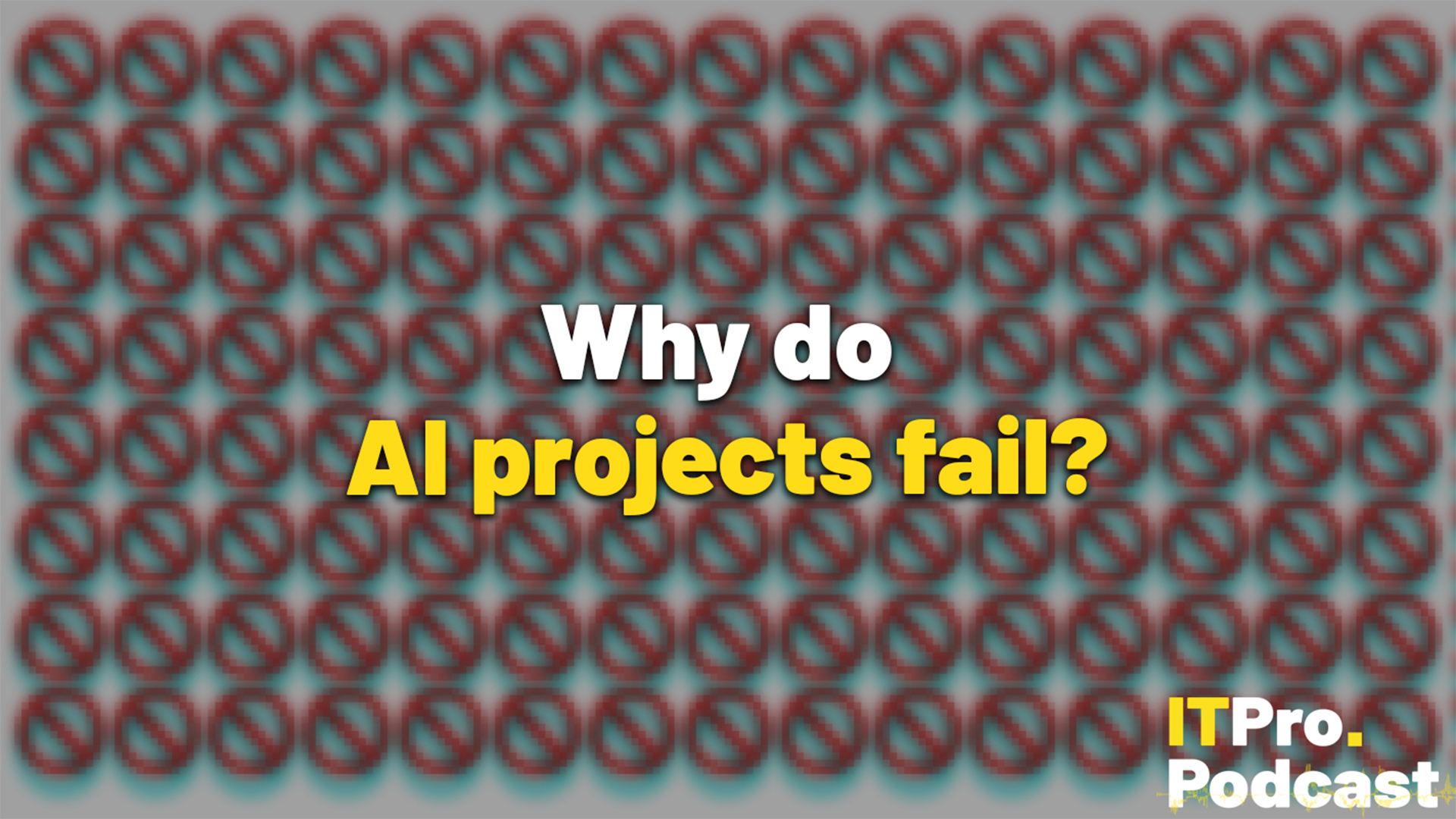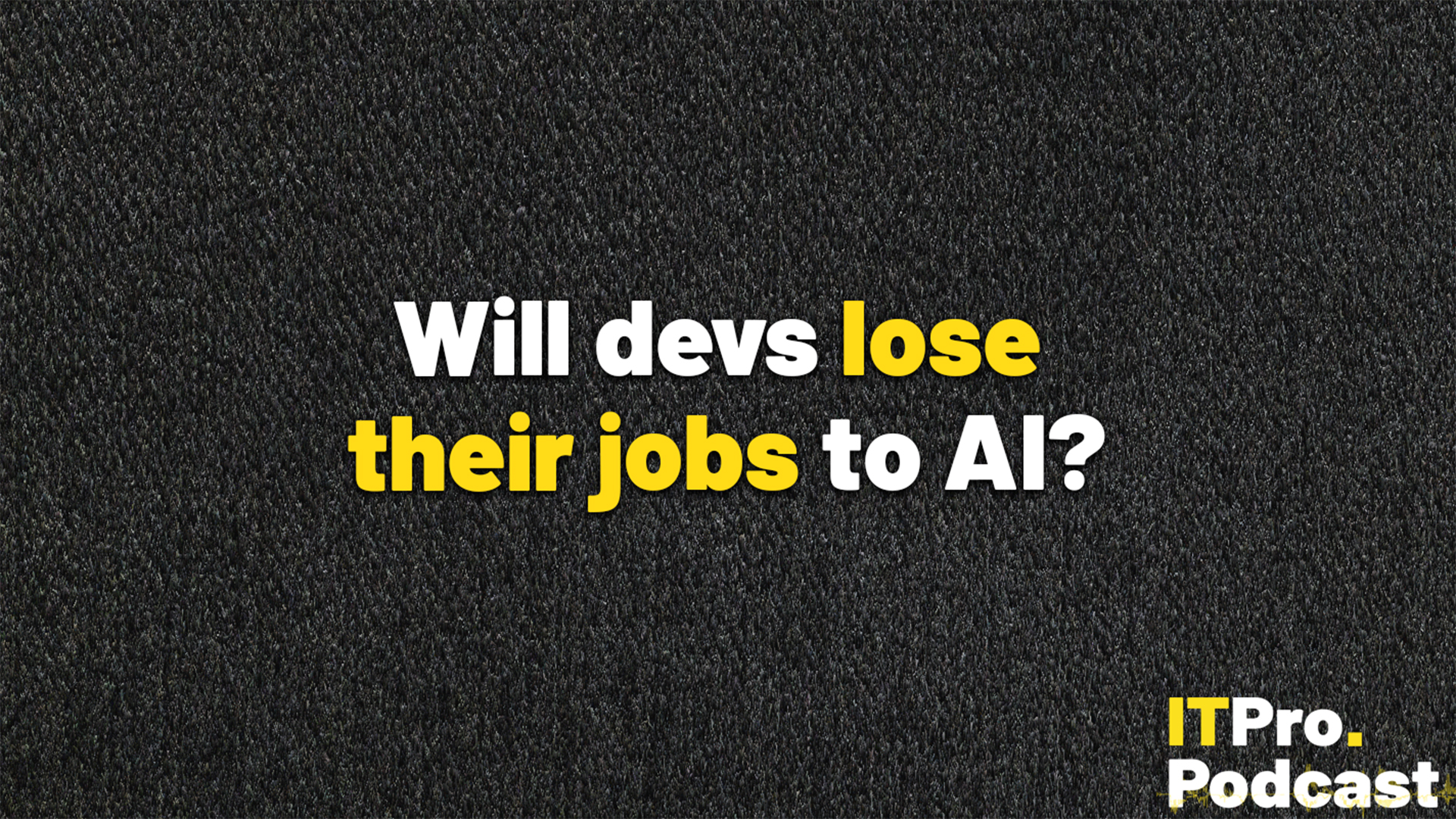Why do AI projects fail?
Without a careful approach at the design phase, AI tools will fall apart in runtime


It seems that everywhere you look these days, businesses are implementing AI features, tools, chatbots, and pilots. But researchers keep coming to the same conclusion about the benefits of enterprise AI adoption – that return on investment is slim to none.
While this isn’t the case for every business, it’s certainly a worry that hangs over discussions of the technology. The secret to making AI projects succeed is knowledge that every leader is after right now – and knowing what not to do is just as important.
Where are businesses going wrong with AI adoption? And how can they apply the learnings of the past few years to ramp up return on investment?Today, we’re joined by Alan Trefler, founder and CEO at Pegasystems, to unpack the main hurdles businesses face when it comes to AI adoption – and why AI failure is becoming such a widespread concern.
In this episode, Jane and Rory speak to Alan Trefler, founder and CEO at Pegasystems, to unpack the main hurdles businesses face when it comes to AI adoption – and why AI failure is becoming such a widespread concern.
Highlights
"You know, the thing about the AI capabilities is it's enormously powerful in putting together a demo. But when you want to do something that needs to be reliable, you need to have made sure that you've made the right decisions about what AI to use in what places."
"Well, I would say it's almost entirely strategic error in terms of people not actually having thought through what the different limitations of the AI are and how applicable they are to the particular problem they're trying to solve. Also, there is a completely mind-numbing amount of vendor hype in the market, I think, unduly covering and coloring the normal thought processes that people go through – and because it's beautiful and easy to get something to work a little, people assume that if they keep doing it the same way it'll work reliably."
"I think that not only is there not a good understanding at the board level, I would say in many technical organizations there's not a good understanding, which is why you have your articles about 95% of projects not going to production. It wasn't that those projects couldn't have gone into production, it's that they were doing the wrong things at design time and as a result, they did the wrong things at runtime."
Sign up today and you will receive a free copy of our Future Focus 2025 report - the leading guidance on AI, cybersecurity and other IT challenges as per 700+ senior executives
Footnotes
- Why are so many AI projects destined for failure? Inexperienced staff, poor planning, and a shoehorned approach to agile development are all stifling innovation
- AI-generated code is now the cause of one-in-five breaches – but developers and security leaders alike are convinced the technology will come good eventually
- Nearly half of all digital initiatives still fail – here’s how you can learn from the ‘digital vanguard’ and deliver success
Subscribe
- Subscribe to The IT Pro Podcast on Apple Podcasts
- Subscribe to The IT Pro Podcast on Spotify
- Subscribe to the IT Pro newsletter
- Join us on LinkedIn

Rory Bathgate is Features and Multimedia Editor at ITPro, overseeing all in-depth content and case studies. He can also be found co-hosting the ITPro Podcast with Jane McCallion, swapping a keyboard for a microphone to discuss the latest learnings with thought leaders from across the tech sector.
In his free time, Rory enjoys photography, video editing, and good science fiction. After graduating from the University of Kent with a BA in English and American Literature, Rory undertook an MA in Eighteenth-Century Studies at King’s College London. He joined ITPro in 2022 as a graduate, following four years in student journalism. You can contact Rory at rory.bathgate@futurenet.com or on LinkedIn.
-
 Security experts claim the CVE Program isn’t up to scratch anymore
Security experts claim the CVE Program isn’t up to scratch anymoreNews CVE data is vital in combating emerging threats, yet inaccurate ratings and lengthy wait times are placing enterprises at risk
-
 Gartner says 40% of enterprises will experience ‘shadow AI’ breaches by 2030
Gartner says 40% of enterprises will experience ‘shadow AI’ breaches by 2030News Staff need to be educated on the risks of shadow AI to prevent costly breaches
-
 Is vibe coding the future?
Is vibe coding the future?ITPro Podcast As developers use AI to speed up code generation, leaders must work to ensure the technology complements existing practices
-
 September rundown: The UK becomes an AI playground
September rundown: The UK becomes an AI playgroundITPro Podcast Big tech has announced tens of billions in infrastructure investments for the UK – how will it help?
-
 August rundown: Are AI job losses a fantasy?
August rundown: Are AI job losses a fantasy?ITPro Podcast AWS CEO Matt Garman's comments were made as big tech continues to lay off workers – but AI may not be the cause
-
 Will devs lose their jobs to AI?
Will devs lose their jobs to AI?ITPro Podcast Major errors in AI code generation throw doubt on the timeline to replacing human workers
-
 Google Cloud Summit London 2025: Practical AI deployment
Google Cloud Summit London 2025: Practical AI deploymentITPro Podcast As startups take hold of technologies such as AI agents, where is the sector headed?
-
 The evolution from robots to agents
The evolution from robots to agentsSponsored Podcast With the right adoption strategy, agentic AI can be a force multiplier for productivity
-
 Podcast Transcript: Are reasoning models fundamentally flawed?
Podcast Transcript: Are reasoning models fundamentally flawed?ITPro Podcast A report from Apple has cast significant doubts on the efficacy of reasoning models, going as far as to suggest that when a problem is too complex, they simply give up
-
 Are reasoning models fundamentally flawed?
Are reasoning models fundamentally flawed?ITPro Podcast A report from Apple has cast significant doubts on the efficacy of reasoning models, going as far as to suggest that when a problem is too complex, they simply give up